Posted by: ericggul 1 year, 1 month ago
Our civilisation is brilliant, unfathomable almost. Reflect on humanity fulfilling the dream of flight – the evolution of marvellous transportation enveloping the spatial-temporal dimension we inhabit. Look at Artificial Intelligence, a complex system we built but operates beyond our comprehension. Observe the new epoch marked at Crawford Lake, signalling the time our civilisation dominates ecology. Welcome to the Anthropocene
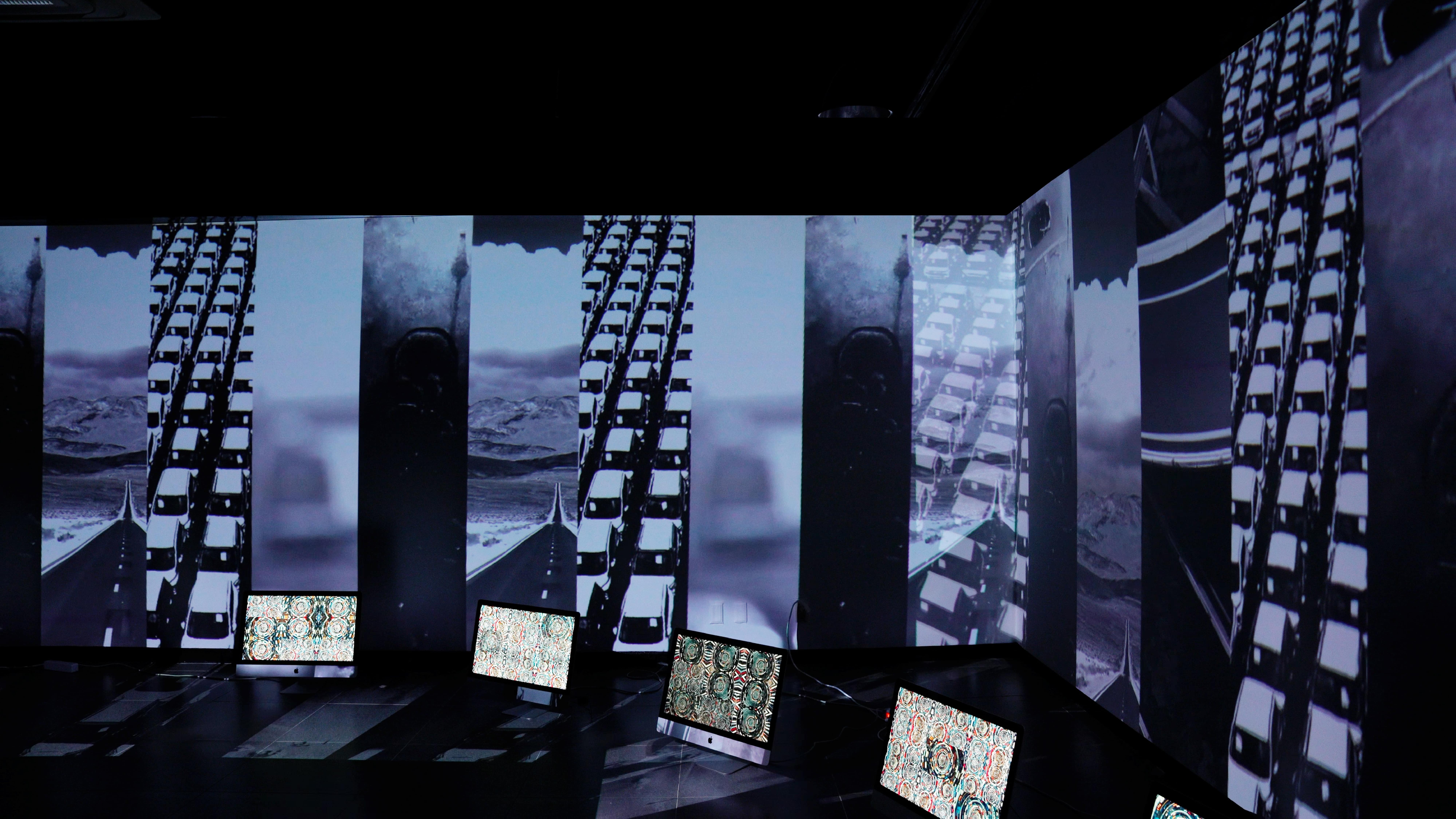
It is undeniable we are living in a golden age. But are we? Isn't our fragmented existence leading to mental illness? What about the persistent conflicts around the world? What about the accelerating climate crisis or the rise of numbers over humaneness? These are indeed troubling times, as civilisation seems more at risk of decline than of flourishing, with the Doomsday Clock standing at 90 seconds to midnight.
Where are we headed? How can we resolve these issues for the present and the future?
Composed in four movements, the Symphony of Civilisation mirrors the symphonic format where each represents a certain period of humanity: Ancient, Post-Industrial, Contemporary, and Future. Rather than explicitly illustrating these eras, the symphony presents four contrasting cross-sections of civilisation. Just as traditional symphonies didn't narrate their stories directly but communicated the composer's intention through melodies and rhythms, this new multi-device web symphony’s audio-visual scape is designed to poetically immerse audiences through audio-visual outputs, creating harmony from multiple channels.
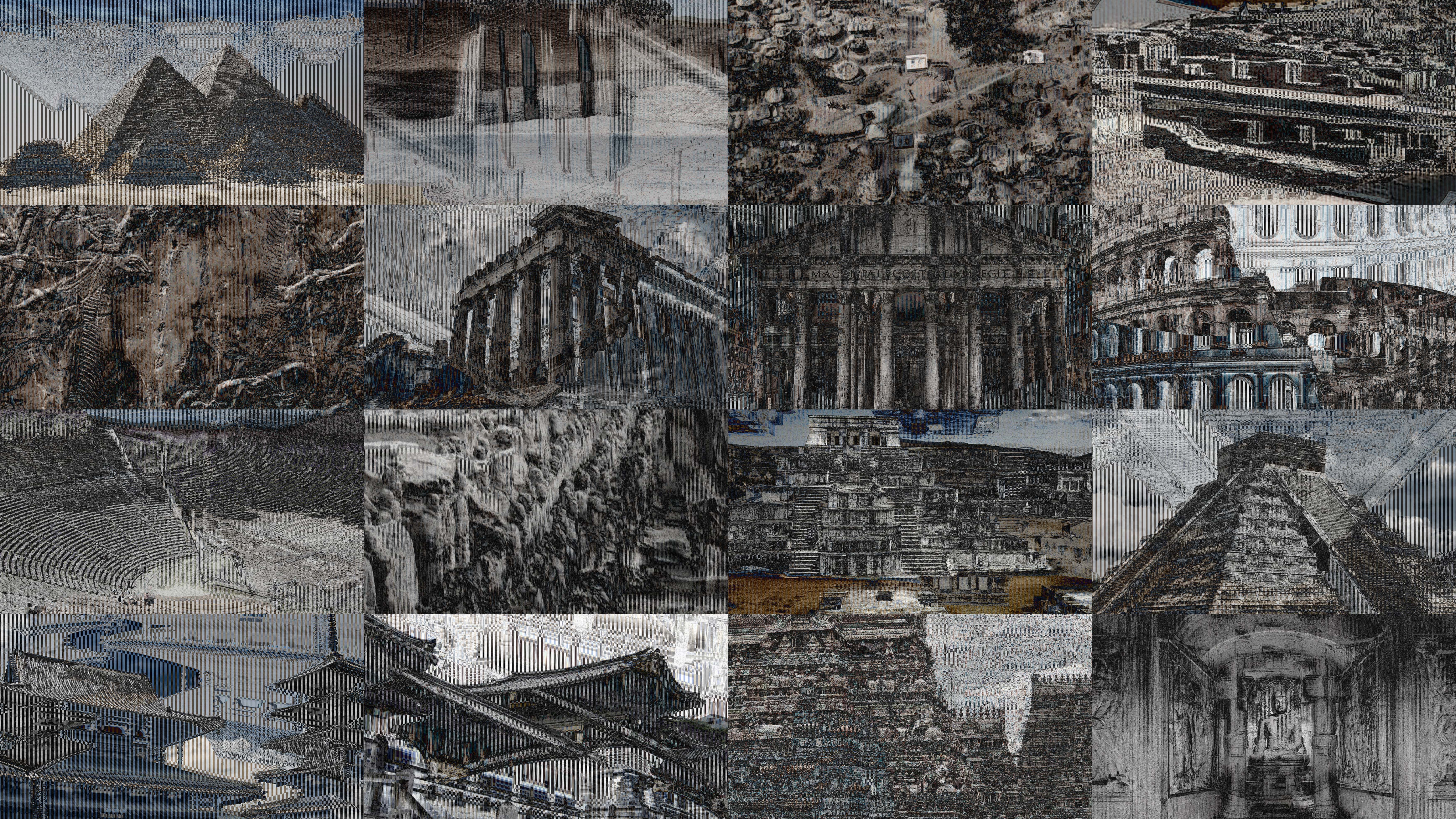
The first three movements illustrate accelerationism, depicting an accelerating rhythm and tension. This suggests that our civilisation is accelerating beyond control, as hyperobjects exist beyond our understanding. Movement Three, for instance, highlights this theme with screens flickering rapidly across all channels at a faster speed beyond our perception. Each screen symbolises our fragmented and segmented contemporary world, all trying to optimise and shine in its own direction yet failing to improve society as a whole; We are still not clever enough to realise that optimising parts doesn't equal optimising the whole. Welcome to this accelerating zero-sum game. How will this end? Should we accelerate further, thus accelerating the catastrophe, as Marxist Accelerationists once claimed?
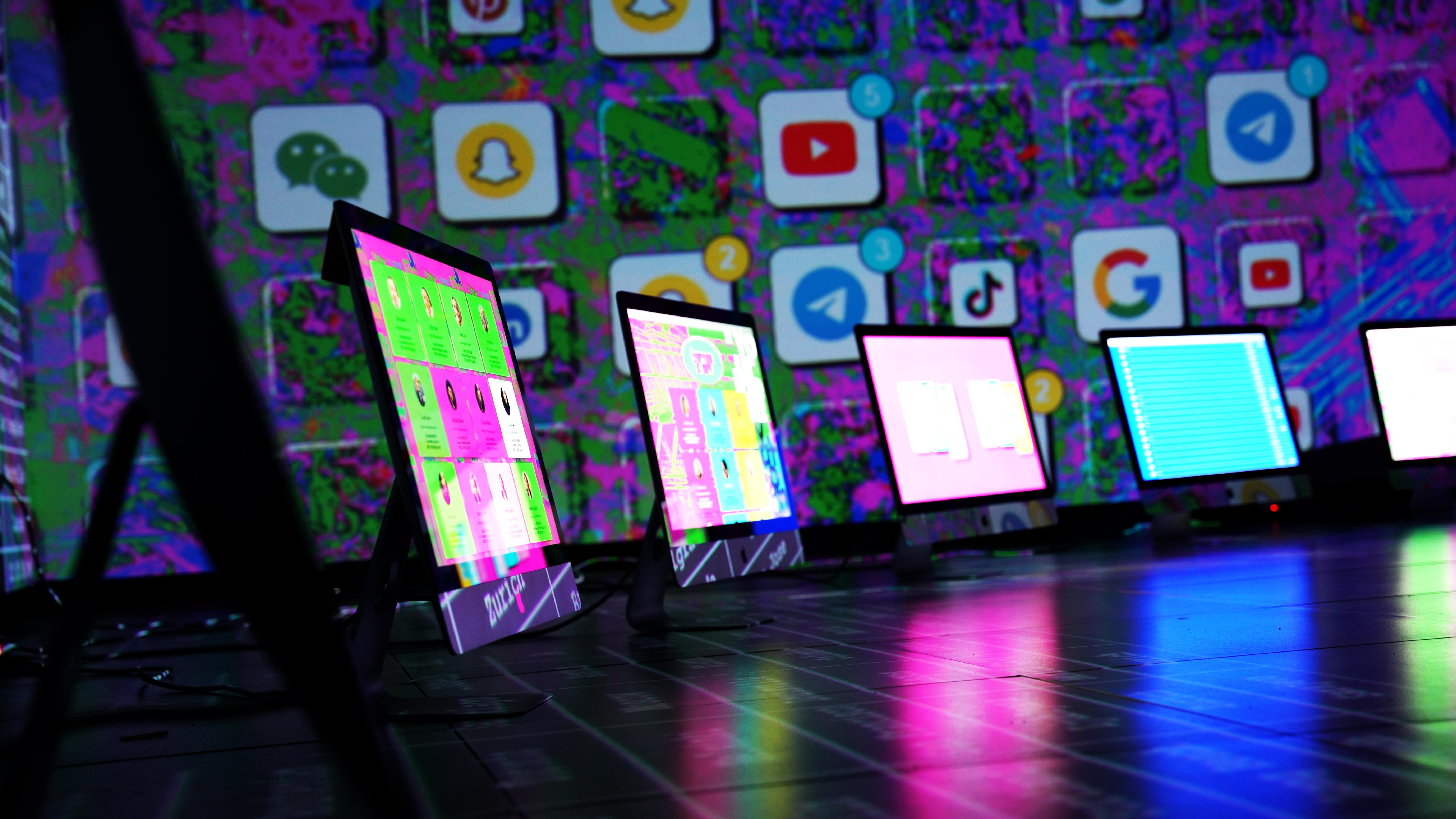
Here emerges the philosophy of Dionysian togetherness within the context of this artwork. Movement Four, the finale of the symphony, portrays a speculative future where individual boundaries fade and people are collectively immersed in a Dionysian experience. This is the only interactive movement, where audience members co-compose the symphony - contrasting sharply with the previous movement, where chaos emerges but audiences had no control other than merely passive spectators. In this fourth movement, audiences scan a QR code and conduct the symphony from their mobiles. The harder the phones are shaken, the louder the audiovisual experience becomes. Audience members’ faces are collaged from different angles and appear on the projector holistically, creating a profound sense of immersion and eliciting primal goosebumps. This immersive experience suggests that the future of civilisation should emerge from Dionysian togetherness. The symphony concludes that the alternative future towards envisioning Dong-Dong can be cultivated by our own hands, aspiring towards a brighter collective future, one where harmony arises from disharmony and collectiveness emerges from individualism.

As a multi-device web symphony, The Symphony of Civilisation incorporates more than ten channels - including projectors, large displays, laptops, and audiences’ mobiles - each acting as an interconnected audio-visual instrument conducted from a single laptop. The harmony created from multiple devices forms a unique audiovisual landscape depicting the past, present, and future of civilisation, reminiscent of portraying the cityscape of each era. The four movements of the symphony each represent the Ancient, Post-Industrial, Present, and Future periods in chronological order.
The First Movement: The Birth, symbolises the dawn of ancient civilisations worldwide. It begins with pure noise - a representation of nature and pure ignorance - soon transformed into vertical stripes, symbolising the birth of the artificial from the wild. Subsequently, a series of ancient architectural forms are displayed atop these stripes. With an accelerating rhythm, different architectures from early civilisations around the world are illustrated - from the Egyptians to the Silla Dynasty, depicting the birth of diverse civilisations worldwide.
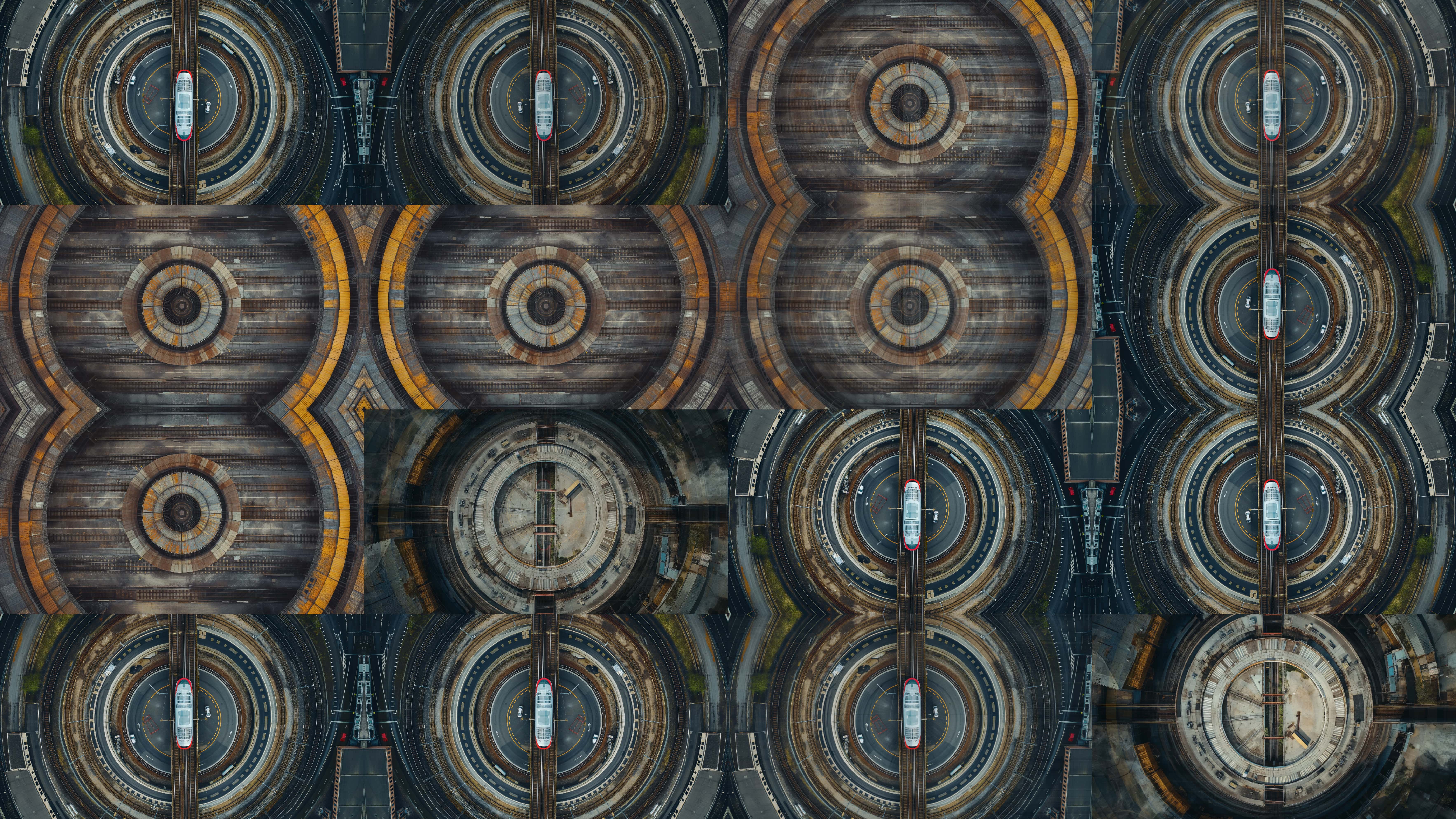
The Second Movement: The Rise, illustrates the accelerating progress of civilisation within the post-Industrial era. We particularly focus on the evolution of transportation modes - from steamboats to jet planes - which have transformed the spatial-temporal dimension humanity inhabits, heavily influencing industrial civilisation. This movement features imagery generated by Midjourney, producing photorealistic images in a circular layout, poetically depicting the evolution of transportation and civilisation - as well as highlighting the homogeneity, contrasted to the diverseness of the earlier movement.
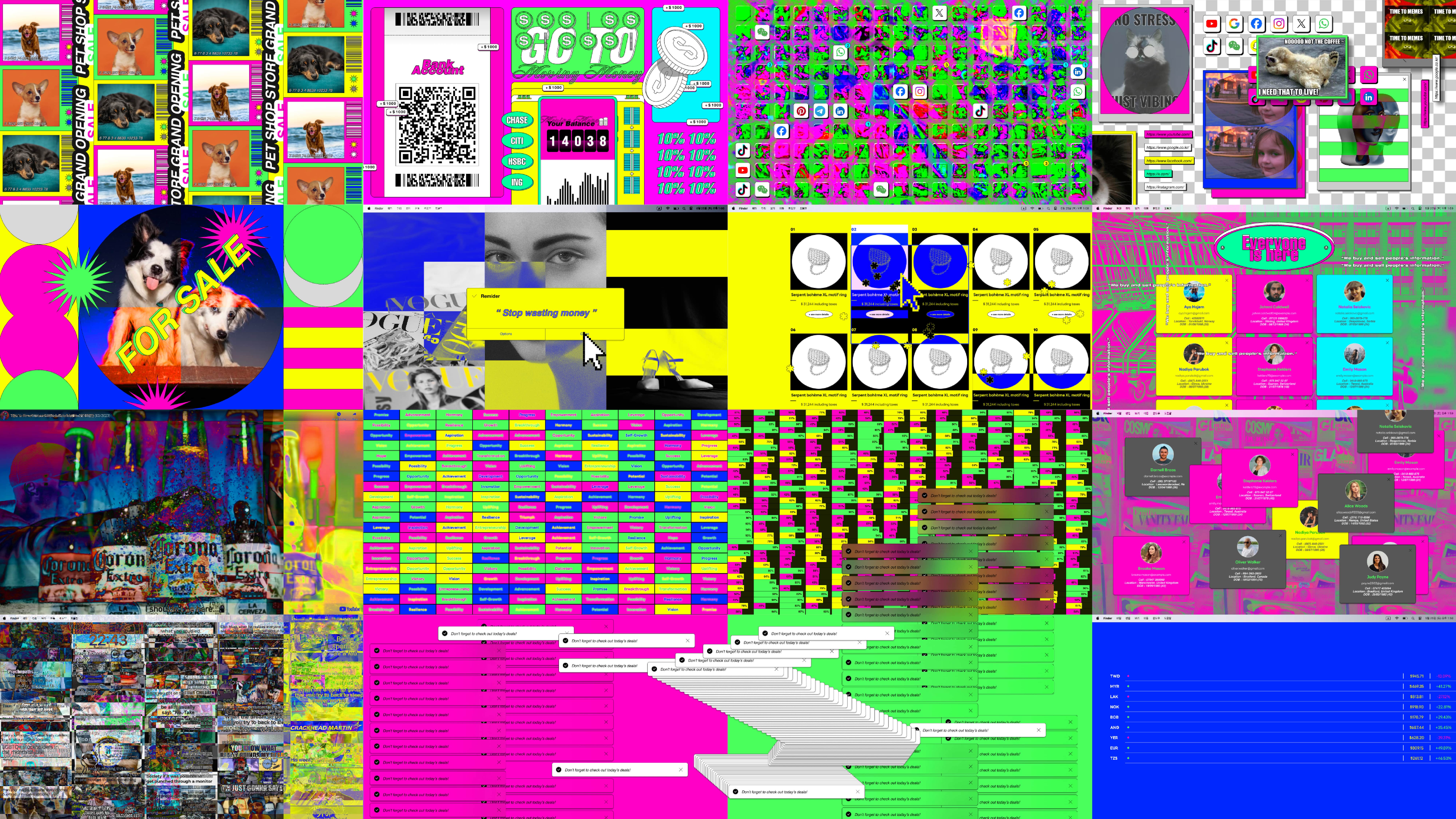
The Third Movement: The Rhythm, depicts contemporary civilisation. Various aspects of digital consumerism - anonymous SNS profiles, shopping malls, online stocks, advertisements, notifications, delivery apps, memes, and ranking systems - are shown rhythmically across all channels. Initially uniform at 120 beats per second, the Tone.js-generated rhythm becomes gradually irregular and non-linear, with unprecedented acceleration and deceleration. Audiences experience immersive chaos across all channels, all altered following a single repetitive yet unstoppable rhythm. This chaos across various channels represents the segmented and highly individualised contemporary civilisation, where all screens - all individuals - strive for their own success with full effort, which actually leads nowhere - depicting the gigantic zero-sum game we reside within.
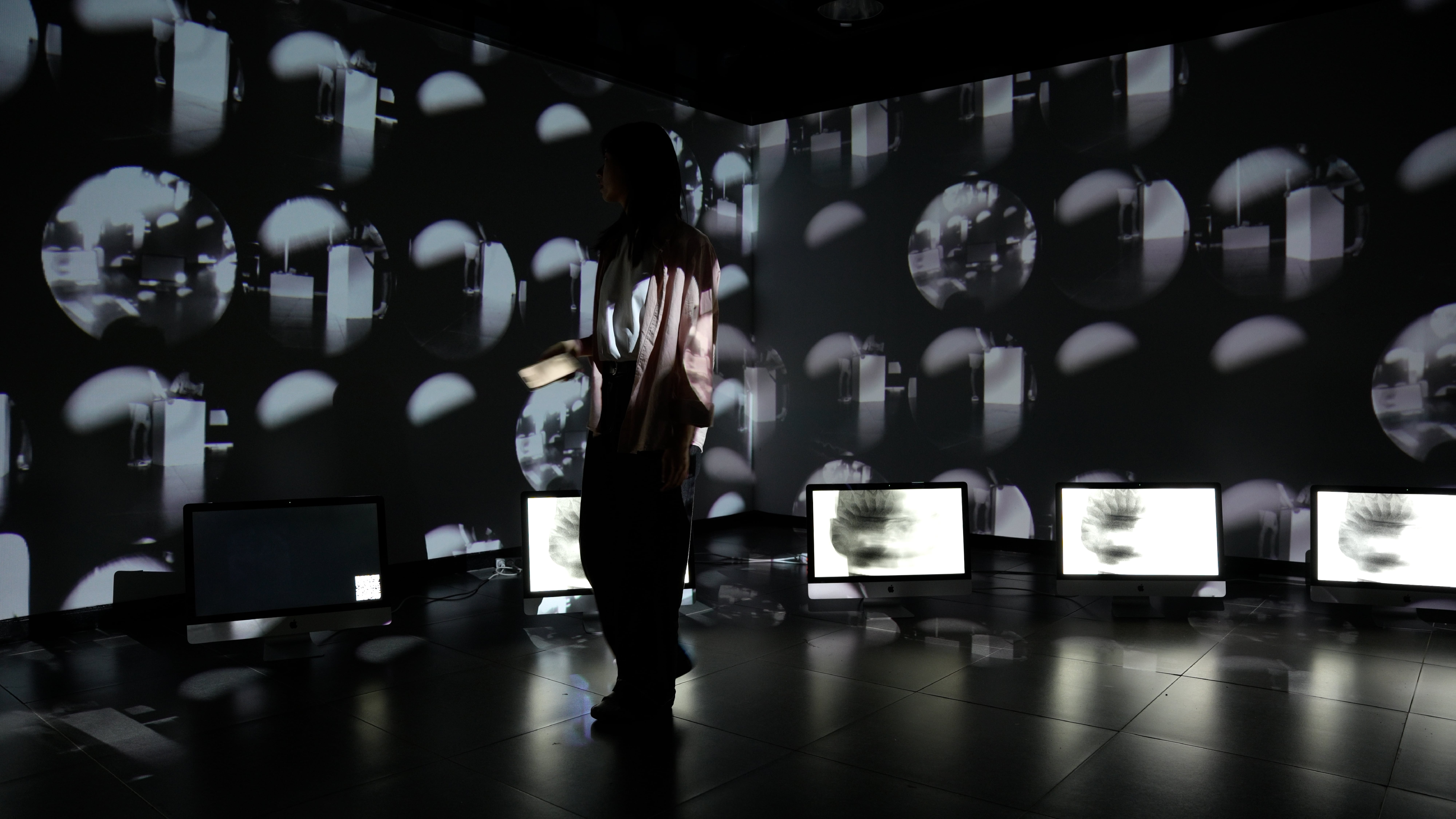
The Fourth Movement: The Dionysian, is the symphony's most interactive composition. Initiated from silence, it invites audiences to scan a QR code displayed on the screen. They are then prompted to shake their phones, with the mobile accelerometer causing the surrounding screens to brighten, and the Mahler No.1 Symphony to enlarge with each shake, fulfilling and augmenting the space. Webcams from different channels are interconnected through WebRTC, mashing faces from different angles across all screens. This collective experience allows many audiences to conduct and control the entire room together embodying Nietzsche's notion of the Dionysian Immersiveness. It is the most poetic, interactive, communal, and hopeful movement of all symphony, with its communal interactiveness sharply contrasted to the previous movement, highlighting the theme and importance of togetherness.

The symphony utilises multiple desktop-connected projectors, over five laptops, and audiences’ mobile phones to compose a Multi-Device Web Symphony. Audiences are invited to use their own laptops and mobiles to participate and co-create this symphony. This presents an experimental form of new media art, situated hybridly between installation and performance. We believe that as techno-humans, exploring digital media in novel ways beyond AI's capabilities depicts the crucial factor of humanness. We hope that the Multi-Device Web Symphony, unlike single-device experiences, can present the potential of both interactivity and collaborative immersiveness converged.
Why present civilisation as the first Multi-Device Web Symphony? Numerous media artworks depict the future through descriptive speculations, often with highly polarised utopian or dystopian visions. Alternatively, we believe that the complexity of the contemporary world requires a more conceptual approach. We wanted to create a work that facilitates subtle reflection among audiences on the past and present of civilisation, guiding them towards an interactive and communal future by the end of the symphony. This idea led to the creation of a chronicle of civilisation in a symphonic format.
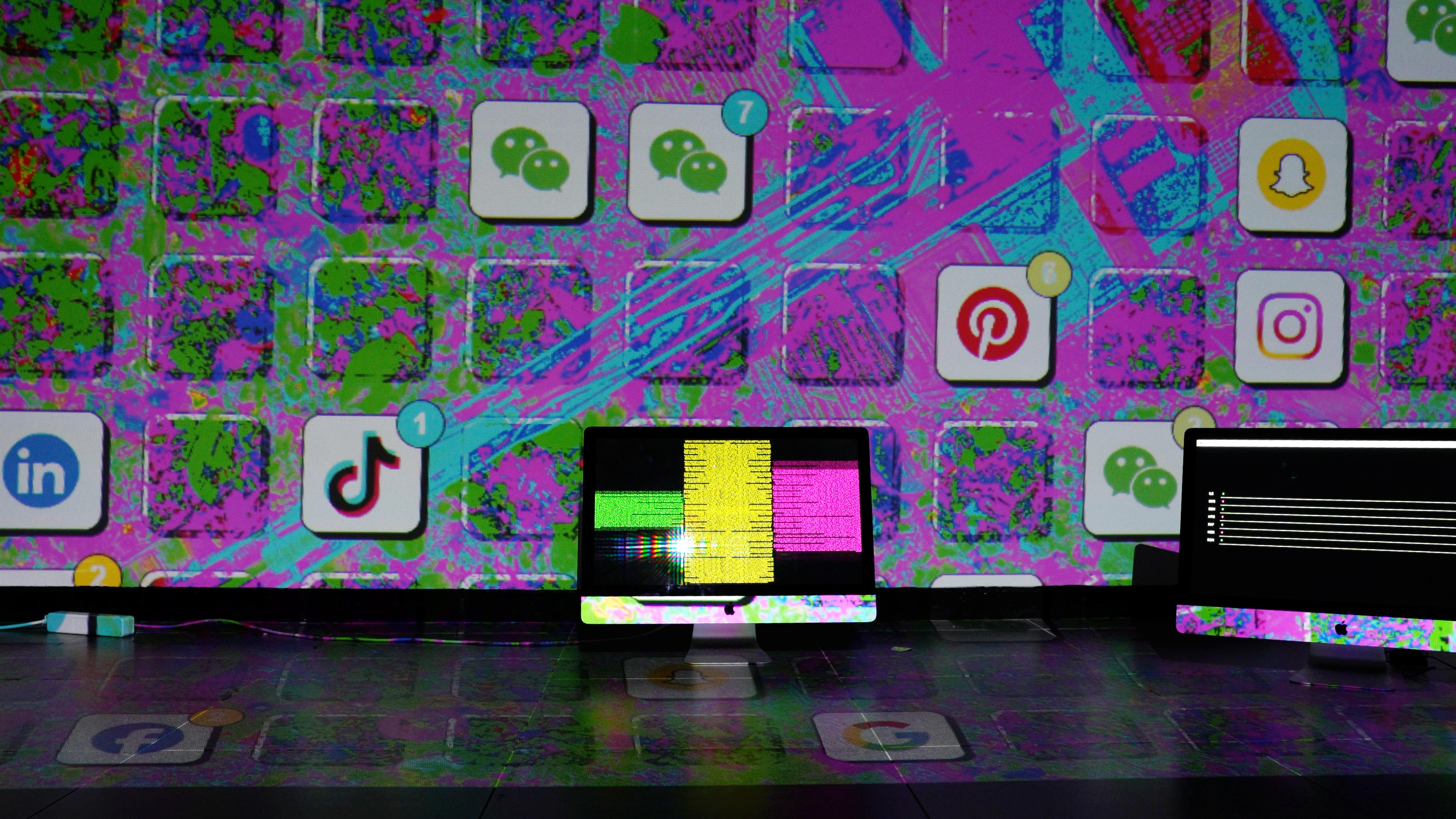
The technical production of this artwork also aligns with these principles. Multi-channel screens showcase different aspects of civilisation, enabling the construction of a multi-layered composition that traditional moving images cannot produce. Various Javascript-based Frontend frameworks - React.js, Next.js, Styled Components - were employed for this composition. Specifically, we employed a Mobile Accelerometer propagated over WebSocket in real-time within Movement Four to give audiences an experience of conducting the whole surroundings by shaking their mobile. This symbolically highlights the importance of Sartrean ‘Engagement’ towards the futuristic Dionysian vision we shall all co-create.
This symphony will be premiered during the IRCAM Seoul Forum.
Comments
There are currently no comments
New Comment